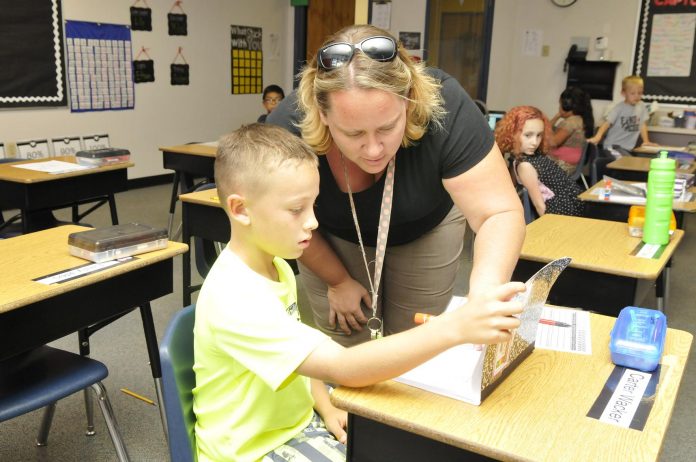Arizona Gov. Doug Ducey asked the State Board of Education to conduct a review of Arizona’s English and math standards in March 2015, resulting in the creation of the Arizona Standards Development Committee to oversee the process and manage over 2,000 comments from the public.
“As a best practice, academic standards are typically reviewed approximately every five years to allow for continuous feedback and improvement,” Shannon Sowby, public relations consultant for education advocacy nonprofit Expect More Arizona, stated. “Arizona’s current standards were adopted in 2010. Nearly 200 Arizona educators, serving as content experts, have collectively worked for more than 3,000 hours on subcommittees and working groups to review and improve our state’s existing academic standards in an effort to make them the best possible
for students.”
According to Sowby, the participating educators represent 10 Arizona counties and were selected “primarily from K-12 school districts and charter schools and higher education faculty.” Last fall, the ASDC oversaw the solicitation of 2,000 public comments on the current standards, including public hearings across the state.
“Now that the drafts are ready, there will be another 45-day comment period during which the public, expert technical reviewers and the ASDC itself will review the changes and offer suggestions,” Sowby stated. “Comments will be collected in person at public hearings, via email and online …. [We] encourage parents, educators and community members to review the changes and submit any feedback you have to the committee through their website or through one of the public events they are holding to solicit feedback.”
According to the ASDC’s proposal to the state board, “The Arizona Mathematics and English Language Arts Standards define what Arizona students need to know, understand, and be able to do at each grade level or course from kindergarten through high school. These draft standards are focused in coherent progressions across grades K-12, aligned with college and workforce expectations, inclusive of rigorous applications of knowledge, and are research- and evidence-based. The draft standards do not define curriculum, dictate instructional practices or address the needs of students who are far below or far above grade level.
“The draft Arizona Mathematics and English Language Arts Standards have refinements and revisions in response to public comments received in the fall of 2015 and are based on the expertise of Arizona expert educators.”
Jennifer Hernandez, Northern Arizona community mobilizer for Expect More Arizona, stated that “Some of the changes to the standards include adding cursive writing in K-3, emphasizing phonics in grades K-5, adding money and time in the elementary standards, separating Algebra I and Algebra II to clarify what skills should be taught and when, moving statistics out of Algebra II into higher level math and adding higher level math standards.”
“There may be some changes that teachers will need to make, but they will depend on what they are teaching already. For example, many schools already teach cursive, so they may just need to ensure that what they are doing is aligned with the standards. Likewise, high schools will need to affirm that their Algebra I and Algebra II standards are being taught in the right courses now that the standards are separated into distinct courses. It’s also important to note that the timeline for implementation has not yet been set by the board
of education.”
Regardless of any positive movements, Hernandez added that a “long-term solution for education funding from the early grades through college and career is needed in Arizona.” The proposed amendments “for the most part just refine and clarify what we already have and in most cases will not require a significant investment of additional dollars.”



